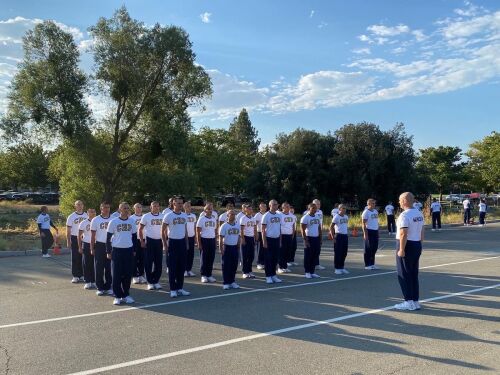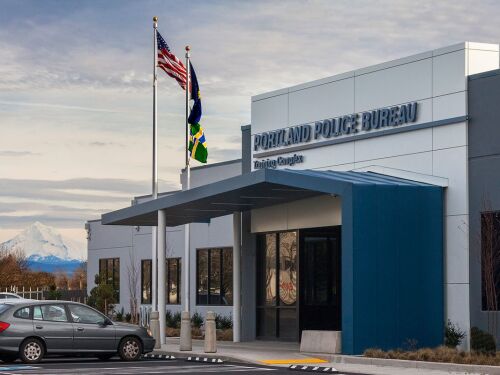By Tim Kucerovy
Imagine a police force where recruitment is swift, efficient and consistently attracts top talent. Now consider the realities of law enforcement recruitment today: prolonged hiring processes, resource drain and poor applicant-to-hire ratios. This contrast highlights a critical challenge in modern policing: the need to challenge the status quo.
The challenger is Lean systems. Lean has transformed industries from manufacturing to healthcare. But what exactly is Lean, and how can it address the unique challenges faced by law enforcement agencies nationwide?
At its core, Lean is about increasing value while reducing waste. It’s a systematic approach that focuses on continuous improvement, respect for people and the elimination of inefficiencies. In the context of law enforcement recruitment, Lean principles offer a powerful toolkit for agencies struggling to do more with less.
Consider this:
- According to an IACP recruitment survey, 47.5% of respondents reported having a hiring process that extends beyond four months (IACP).
- Inefficient recruitment can cost agencies thousands of dollars per hire in wasted resources.
Whether you are a police chief grappling with staffing shortages or a recruitment officer seeking to improve your processes, Lean methodologies can transform your recruitment system into a streamlined, effective approach.
Understanding Lean methodology in recruitment
At its core, Lean focuses on streamlining workflows by eliminating waste and prioritizing value. In recruitment, value must be viewed from the applicant’s perspective, treating them as customers. Similarly, community members should be seen as customers in every interaction, reinforcing the notion of law enforcement as a service. The role of a public servant is to provide value, whether through effective recruitment processes or community engagement.
When applied to police recruitment, Lean can highlight where time, resources, or efforts are being misallocated. For instance:
- Are job postings failing to attract the right talent?
- Are background checks taking too long, resulting in candidate drop-off?
- Is communication with applicants too sporadic, causing disinterest?
Lean recruitment principles can deliver powerful advantages, such as:
- Reduced time-to-hire: Eliminating inefficiencies can significantly shorten the hiring cycle.
- Improved candidate experience: Streamlining keeps candidates engaged throughout the process.
- Cost savings: Fewer wasted resources lead to tangible savings.
- Higher quality hires: Focusing on value-added activities attracts and retains high-quality candidates.
Implementing Lean in law enforcement recruitment
To successfully integrate Lean into their recruitment process, agencies must take several key steps:
Map the entire process
- What it means: Create a detailed visual representation of the current recruitment process, from job posting to onboarding.
- Why it matters: Mapping the process provides a clear picture of inefficiencies, such as delays in background checks or excessive manual paperwork, that slow recruitment and increase costs.
Identify performance benchmarks
- What it means: Establish clear, measurable goals for each stage of the recruitment process.
- Why it matters: Performance benchmarks help quantify success and highlight areas needing improvement, ensuring alignment with broader department goals, such as improving diversity or hiring highly qualified candidates faster.
Analyze and improve
- What it means: Analyze inefficiencies or delays and develop strategies to eliminate or reduce them.
- Why it matters: Streamlining ensures top candidates are not lost due to preventable delays or lack of communication.
Implement change
- What it means: Introduce changes incrementally to ensure they are manageable and assess their impact before scaling up.
- Why it matters: Small, well-executed changes deliver immediate results, reducing inefficiencies and increasing candidate engagement.
Continuous improvement
- What it means: Commit to ongoing improvement by identifying new opportunities and maintaining implemented changes. Regular feedback loops from candidates and staff are essential.
- Why it matters: Continuous improvement ensures the recruitment process remains efficient and adaptable to changing needs, such as fluctuations in hiring demand or evolving candidate expectations.
The role of leadership in Lean implementation
For Lean to thrive, it must become ingrained in the agency’s culture, driven from the top down. Leaders play a crucial role in this transformation:
- Set the tone: Chiefs and senior officers must visibly champion the Lean approach, demonstrating its importance to the entire department.
- Empower teams: Encourage staff at all levels to identify inefficiencies and propose solutions.
- Provide resources: Ensure teams have the necessary training, tools, and time to implement Lean principles effectively.
- Lead by example: Apply Lean thinking to leadership processes, showing a commitment to department-wide efficiency.
- Communicate aegularly: Keep the department informed of successes and lessons learned to maintain momentum and foster engagement.
Challenges and considerations
While Lean can transform recruitment, success requires commitment and careful planning to overcome potential challenges.
Cultural resistance may arise from traditional law enforcement practices that resist new approaches, but this can be addressed by starting with small, visible wins, involving skeptics, providing training, and identifying change champions within the organization.
Initial resource investment, such as training and process redesign, may seem daunting, but beginning with low-commitment, high-value projects and demonstrating ROI through pilot initiatives can help justify further investment.
Maintaining quality standards is essential to ensure that process improvements do not compromise thorough candidate vetting; clearly defining non-negotiable standards and using Lean to enhance rather than replace critical assessments is key. To sustain momentum, agencies must regularly celebrate and communicate successes while aligning Lean objectives with department-wide goals and performance metrics, ensuring long-term engagement and adaptability.
By addressing these challenges, an agency can position itself as an attractive employer for progressive candidates who value efficiency and innovation.
Conclusion
Lean offers a clear path for agencies looking to redesign their recruitment process. By reducing costs, streamlining processes, and improving candidate satisfaction, departments can build a more effective and efficient pipeline of talent. With committed leadership and a willingness to challenge the status quo, law enforcement agencies can effectively navigate the complexities of modern recruitment and build a workforce ready for the challenges of tomorrow.
Bibliography
Lean Enterprise Institute (October 3, 2024.) Lean thinking and practice.
Lu D. (2011.) Chapter 4: Lean Supply Management. In Fundamentals of Supply Chain Management (pp. 50–60).
About the author
Tim Kucerovy is the founder of Lumen Strategic Consulting, LLC, providing tailored solutions in operational efficiency and leadership development for law enforcement agencies. With extensive experience in traditional and non-traditional law enforcement as well as in higher education, Tim combines practical law enforcement expertise with a deep understanding of organizational strategy. Tim holds an MBA with a concentration in Supply Chain Management from Ohio University and is dedicated to helping agencies enhance recruitment, retention and overall performance. For more information, visit Lumen Strategic Consulting LLC.







